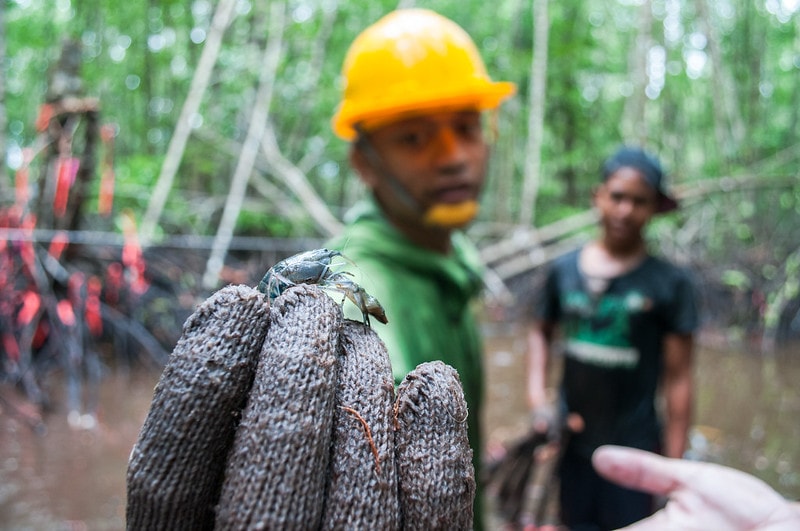The carbon on your plate: mangrove and aquaculture
- From
-
Published on
11.07.20
- Impact Area

Stinky and full of mosquitos, mangrove forests may easily be dismissed and marginalized. But in these brackish coastal ecosystems, each hectare of mangrove swamp can store three times more carbon than terrestrial forest ecosystems, making them a key component in efforts to forestall climate change.
“It’s not exactly a nice place to work,” says Daniel Murdiyarso, laughingly recalling the challenging conditions he has faced during a 30-year career dedicated to the study of mangroves in 25 countries.
The CIFOR principal scientist says their unappealing image often undervalues mangrove forests leading to deforestation activities that make way for aquaculture farms, infrastructures and agricultural land. In Southeast Asia, for example, more than 100,000 ha of mangrove were removed between 2000 and 2012. “It is time to call for a moratorium on mangrove deforestation,” says Murdiyarso.
Related news
-

CGIAR Climate Security team pilots a new research approach for the development of Nature-based Solutions in fragile settings
Ibukun Taiwo27.11.25-
Climate adaptation & mitigation
Responding to complex crises requires new systemic research approaches that help identify entry poin…
Read more -
-

Drones prove their worth in measuring livestock methane in Africa
International Livestock Research Institute (ILRI)26.11.25-
Mitigation
In May 2024, the International Livestock Research Institute (ILRI) and partners shared news of the…
Read more -
-

Pioneer adaptation farmers inspire adoption of climate-smart innovations in Bomet County, Kenya
International Livestock Research Institute (ILRI)24.11.25-
Adaptation
In Bomet County, Kenya, where agricultural traditions run deep, two families and their farms are…
Read more -
